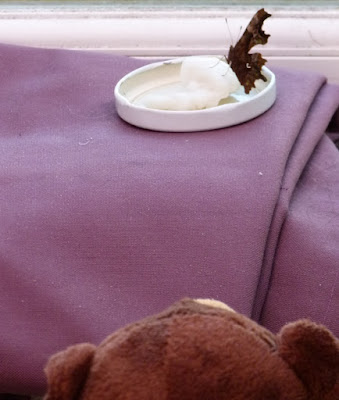Hello
I have not reported for sometime on my weblog. I hve been helping my brother Ed the Bear to plan his adventures. As you may know, from time to time I travel to sites and events that Ed the Bear cannot visit because he is travelling somewhere else.
Well, Ed the Bear was invited to share his adventures at the Lewes Railway Land Nature Reserve 25th Anniversary Event.
Ed the Bear is at the National Black Scuba Divers Youth Summit, which includes the Tennessee Aquatic project Ed visits each year. The project teaches youths of 8-18 years who are at risk or underprivlaged to scuba dive and teaches other life skills.
Ed always visits the Youth Summit, so he asked me if I would go to Lewes instead. I was delighted, because while Ed the Bear has a passion for the ocean, I am more interested in ponds and land animals such as birds and insects.
I was asked if I would lead 2 bug hunts around an area called the heart of reeds. This is a special reed bed that was designed by the environmental artists Chris Drury.
The heart of reeds is designed to represent a cross section of a heart - the water representing the blood flow through the heart.
I came with Ed's friend Steve and we brought Ed's display so we could share Ed's the Bears story and message. We set up the display in a tent.
It wasn't long before it was time to run the first bug hunt for a group of children and adults. We went to the top of the mound which over looked the heart of reeds. We spoke to the group about the reed bed and the wildlife we hoped to see. We then started our bug hunt around the heart of reeds.
I warned the children that the water was very deep and that they needed to stay near the path.
There were many spiky teasels and we told the group about how rainwater collectes in the petals at the bottom of the head.
Small insects drown in this and as they decompose the plant can absorb their nutrients.
We saw lots of wildlife as we went around the trail. There were lots of different beetles (black and a green one) and also many ladybirds. There were black ants guarding blackfly, these little black bugs suck the juices from plants.
Ladybirds eat black fly and ants tb to stop them because the ants farm the blackfly to get a sugary liquid from them which the ants like. We also saw differnt types of woodlice, inckuding the pill bug which can role up into a ball to defend itself.
The children had bug collecting pots and they collected some of the animals they found so we could have a closer look.
As we walked around we saw lots of bees, including honey bee, buff tailed bumble bees and red tailed bumble bees.
We saw this female spider carring her eggs. We decided it would best to leave her where she was so as not to disturb her.
The children found lots of banded snails. Steve told the group that snails were very important. Firstly because other animals eat them and Steve asked the children if they could think of an animal that eat snails. One child said a thush and another child said hedgehogs.
Steve said snails were important because when they eat plants they open up space for other plants to grow. Its only in our gardens that some people think of them as pests.
We watched this beautiful male mallard duck.
Only the males are brightly coloured, the females are brown so that predators cant spot them while they were on the nest.
When we had finished the walk, we released the animals back into the heart of reeds where they live.
Everyone said they enjoyed bugwalk and learned lots of interesting things.
I will tell you about the second bug hunt later.
Bye for now, Bella.
















































